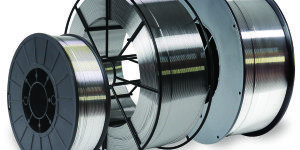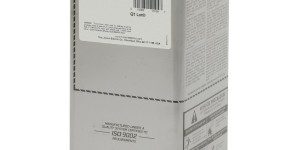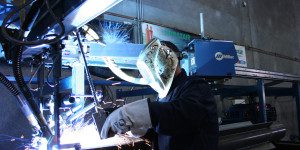Filler Metals/Electrodes
Filter by Process Zone:
Welding Wire Reduces Wire Shavings for More Cost-Efficient Welding

AlcoTec Wire, an ESAB company, features its patent-pending 5XXX Series NT aluminum welding wire that applies the newest innovation in wire manufacturing technology to significantly reduce or virtually eliminate wire shavings.
Low-Alloy Ccellulosic Electrode for Pipe Welding

Pipeliner Arc 80, a low-alloy stick electrode from Lincoln Electric, is designed for root pass welding up to X80-grade pipe, fill and cap pass welding for X70-grade pipe.
Beyond the Robot: Improving Robotic Welding with the Right Filler Metal and Packaging

To achieve the full benefits of robotic welding, it’s important to focus on the entire system — not just the robot and power source. While a small part of a much bigger picture, the selected filler metal and its packaging can both play a critical role in maximizing the performance of a robotic welding system. Here’s how.
Factors for Selecting the Right Stick Electrode

The stick electrode used in an application can have a significant impact on the quality of the final weld. Consideration of these factors is a good start to overcoming the challenge of selecting the correct stick electrode for a particular job.
Filler Metals/Electrodes
Filler metals are alloys or pure metals that are heated to liquefy, melt and flow into the space between two close fitting parts, creating a brazed or soldered joint that meets specific requirements for strength and corrosion resistance. Welding electrodes…
Rent a Robot at Miller Electric
The new Robotic Welding Cell Rental Program allows end users to test automation in their own welding operation before purchasing equipment, minimizing risk and barriers regarding capital expenditures, and helping businesses meet short-run production demands.
Flux-Cored Electrode Usability Designators: What Do They Mean?
Those dash numbers refer to the usability of the electrode with requirements for polarity and general operating characteristics. Here’s how they work.
Cleaning and Preparing Aluminum Filler and Base Metals Before Welding
Dirty aluminum sets you off on the wrong foot before you ever strike an arc. Take these cleaning and prep steps for the optimal welding of aluminum.
From Selection to Storage: The Basics of Common Aluminum Filler Metals
In order to gain the best results when welding aluminum, Tim Hensley of Hobart Brothershere are the reasons why and how it is critical to select the correct filler metal and carefully follow the proper storage and handling procedures for these products.
Metal-Cored Electrode Improves Welding Travel Speed
Fought & Company relied on a solid electrode in its submerged arc welding process for bridge fabrication applications until a composite metal-cored electrode from Hobart Brothers improved their welding travel speed by 40 percent.
Storage & Re-Drying Considerations of Low Hydrogen SMAW Electrodes
While executing proper welding technique is the most obvious way to avoid porosity or other defects in low hydrogen SMAW welding, Joseph Murlin of Lincoln Electric explains how the success of the job actually starts well before the first arc is struck.
Best Practices for Using Low Hydrogen SMAW Electrodes
Follow the guidelines in this primer from Joseph Kolasa and Joseph Murlin of Lincoln Electric for applications where base metals have a tendency to crack, where thick sections are to be welded or where the base metal has an alloy content higher than that of mild steel, such as high carbon and low alloy steels.



